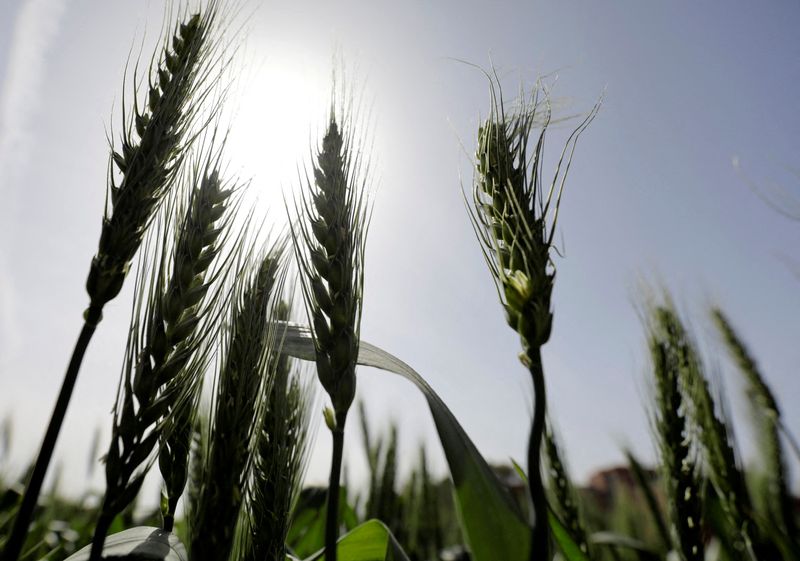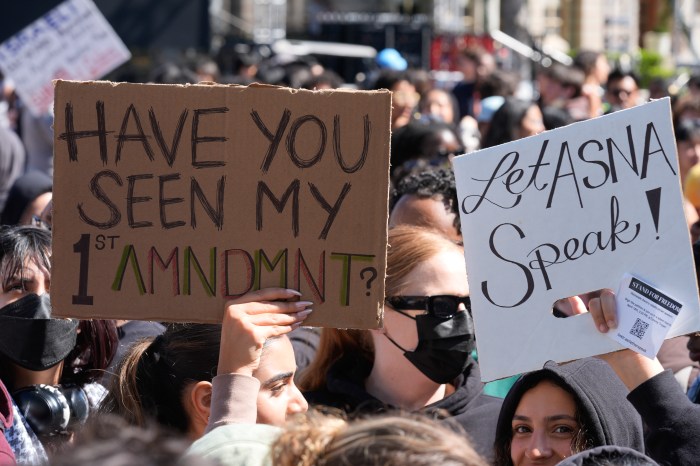PARIS/LONDON (Reuters) – The threat to wheat supplies from Russia’s invasion of Ukraine has been exacerbated by a shift in global stocks away from major exporters such as the United States and European Union, undermining their effectiveness as a cushion in times of crisis.
U.S. wheat futures rose to a 14-year high on Thursday as importers scrambled for supplies following the closure of ports in Ukraine and disruption to supplies from Russia. The two countries account for about 29% of global wheat exports.
Wheat futures have risen by about 40% so far this year, driving up food prices and contributing to a broader surge in a global inflation surge as economies recover from the coronavirus crisis.
Stocks in major wheat exporters – the European Union, Russia, the United States, Canada, Ukraine, Argentina, Australia and Kazakhstan – are set to fall to a nine-year low of 57 million tonnes by the end of the 2021/22 season, International Grains Council (IGC) data shows.
They now account for just one-fifth of global inventories and, with world consumption expected to total 781 million tonnes, that would feed the world for just 27 days.
If Russia and Ukraine are excluded, other major exporters account for 16% of global stocks or enough wheat to feed the world for less than three weeks.
“You need to look at what’s available,” Dan Basse, president of Chicago-based consultancy AgResource, said of wheat stocks. “If someone has a problem, there is surely not enough supply.”
There are also concerns the crisis may prevent farmers in Russia and Ukraine planting grain crops this spring, putting further strain on global supplies.
SUPPLY RISKS
Food security has moved up the agenda in major importing countries as supply chain issues during the COVID-19 pandemic coincided with harvest setbacks in key supply zones and the highest international grain prices in years.
Several states have been looking at ways to shield themselves against supply risks by increasing stocks of imported wheat or expanding their own production.
“Some countries are looking at modernising their reserve system like Kenya for example. There has been a system of maize reserves in place and now they’re looking at expanding that into other grains especially wheat,” said IGC senior economist Alexander Karavaytsev.
Many of the world’s top importers are in the Middle East and North Africa where bread is an important staple but hot, dry weather makes it difficult to grow wheat.
Saudi Arabia in December said it had approved an exceptional increase in its local wheat procurement price to boost domestic production, as it turns away from a previous policy of relying almost exclusively on imports.
Top wheat buyer Egypt is considering an overhaul of its decades-old food subsidy programme which provides cheap bread to nearly two-thirds of the population but is widely criticised as wasteful.
Egypt is planning to build more port silos and accepting more supply origins in import tenders to increase competition.
Graphic: Wheat stocks in China and exporting countries- https://fingfx.thomsonreuters.com/gfx/ce/byvrjemoove/Wheat%20stocks%20graphic_China_exporters.jpeg
Graphic: World wheat stocks- https://fingfx.thomsonreuters.com/gfx/ce/lbvgnzjrnpq/World%20wheat%20stocks.jpeg
EBBING RESERVES
Some exporters like the EU and United States have seen wheat reserves ebb in recent decades due to subsidy reforms or a shift towards other crops like corn and soybeans.
The majority of wheat stocks not in the hands of major exporters are now in one country, China, which is expected to account for 131 million tonnes, or 47%, of global inventories at the end of the current season, according to IGC data.
Such figures are hard to verify as China closely guards data it sees as strategically important, but the country has clearly amassed reserves since the 2005/06 season when the minimum support price was introduced to encourage farmers to grow wheat.
“In China, there has been a refocus on food security in the past one or two years,” the IGC’s Karavaytsev said, adding that the minimum support price was raised in 2021 for the first time since 2014.
China has exported about 1 million tonnes a year in recent years, including to North Korea.
But some observers say the outlook may not be too bleak because of the even spread of wheat production around the world, in contrast to crops such as corn and soybeans, helping mitigate weather risks.
“A situation where the whole world has a crop problem is not something that happens very often (for wheat),” says Andree Defois, head of consultancy Strategie Grains.
Hubertus Gay, senior agricultural policy analyst at the OECD, said importers should seek to be attractive trading partners but he said buffer stocks also had a role. “The balance is very difficult,” he said.
(Reporting by Gus Trompiz and Nigel Hunt; Graphics by Forrest Crellin; Editing by Edmund Blair)



















